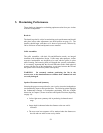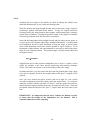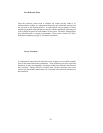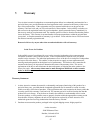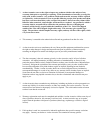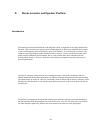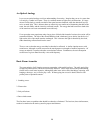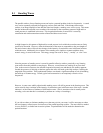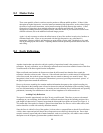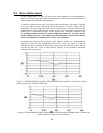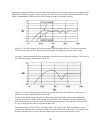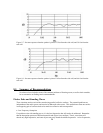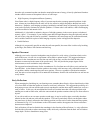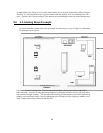
21
8.1 Standing Waves
The parallel surfaces of most listening rooms can lead to a potential problem in the low frequencies. A sound
wave can be repeatedly reflected from opposing surfaces, back and forth. If the distance between the
surfaces is an integral multiple of one-half the sound wavelength, a standing wave will be set up. This means
that the incident and reflected waves combine with each other so that a stationary pattern of high and low
sound pressures is established in the room. This irregular distribution of sound level is caused by
cancellation and reinforcement between the reflected and direct sound waves.
At high frequencies, this pattern of high and low sound pressure levels within the room becomes too finely
spaced to be discerned. However, when the dimensions of the room are comparable to the wavelengths of
the musical notes, there will be obvious changes in the intensity of certain bass notes in different locations
within the room. Additionally, the existence of the standing wave implies a resonant condition where
acoustic energy is stored in the room. This energy storage can result in “heavy”, “muddy”, or “slow” bass.
Since the presence of standing waves is caused by parallel reflective surfaces, practically every listening
room suffers from this problem to some degree. However, several factors are working in our favor here.
First, as the room size increases, the affected frequencies become lower and thereby less audibly apparent.
Second, the presence of shelving or furniture against the walls will break up the large surfaces, reducing the
magnitude of the problem. Third, upholstered furniture can absorb a significant amount of bass, diminishing
the build-up of resonant energy. Fourth, typical wall construction is not completely reflective at low
frequencies.
However, in some cases audibly objectionable standing waves will still be present in the listening room. This
can be noted by large variations of the intensity of certain bass notes in different areas of the room. Another
indicator is an unevenness of loudness of different bass notes. (This is sometimes what is actually on the
recording, so be sure that this is consistently a problem on a variety of recordings.)
If you wish to reduce or eliminate standing waves that may exist in your room, it will be necessary to reduce
the low-frequency reflectiveness of at least one of the parallel opposing surfaces. The most effective method
is to use DAAD’s, available from Acustica Aplicata. Experimentation will be needed to determine the
optimal locations.



